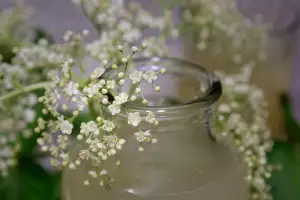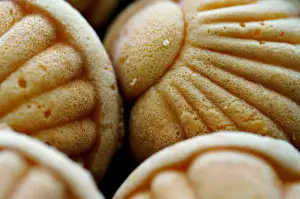Master the Art of Making Buttercream Frosting with These Simple Steps

Buttercream frosting is a versatile and delicious topping that can elevate any baked treat to the next level. It is a classic choice for cakes, cupcakes, cookies, and more due to its creamy texture and sweet flavor. Made primarily from butter, confectioners' sugar, and vanilla extract, buttercream frosting is easy to customize with different flavors and colors. Whether you're a baking enthusiast or a professional chef, mastering the art of making buttercream frosting will allow you to create restaurant-quality desserts at home with ease.
Ingredients Required for Buttercream
To make a delicious buttercream frosting, you will need the following ingredients:
1. Unsalted butter - It is essential to use unsalted butter as it allows you to control the level of salt in the frosting.
2. Confectioners' sugar - Also known as powdered sugar, this ingredient gives the frosting its sweetness and smooth texture.
3. Vanilla extract - Adds a rich flavor to the frosting and enhances its overall taste.
4. Milk or cream - Used to adjust the consistency of the buttercream to achieve your desired texture for spreading or piping.
Steps to Make Buttercream Frosting
1. Soften the Butter: Start by allowing the butter to come to room temperature, ensuring it is soft enough for easy blending.
2. Beat the Butter: In a mixing bowl, beat the softened butter until creamy and smooth using an electric mixer or stand mixer.
3. Add Confectioners' Sugar: Gradually add confectioners' sugar to the butter while continuing to mix on low speed until well combined.
4. Incorporate Vanilla Extract: Pour in vanilla extract for flavor and continue mixing until fully incorporated into the frosting.
5. Adjust Consistency with Milk or Cream: If needed, adjust the consistency of the frosting by adding small amounts of milk or cream until desired thickness is achieved.
Soften the Butter
To start making buttercream frosting, the first step is to soften the butter. This is crucial for achieving a smooth and creamy texture in your frosting. To soften the butter, leave it out at room temperature for about 30-60 minutes. The butter should be soft enough that when you press your finger into it, it leaves an indentation but is still cool to the touch. Avoid melting the butter in the microwave as this can affect the consistency of your frosting. Softened butter will blend more easily with other ingredients, resulting in a silky and luxurious buttercream frosting.
Beat the Butter
To beat the butter for your buttercream frosting, start by ensuring that the butter is at room temperature. This will make it easier to incorporate air and achieve a light and fluffy texture. Using a stand mixer or hand mixer, beat the softened butter on medium-high speed for about 3-5 minutes until it becomes pale in color and increases in volume. Scrape down the sides of the bowl as needed to ensure even mixing. Properly beaten butter is crucial for creating a smooth and creamy base for your buttercream frosting.
Add Confectioners' Sugar
To make buttercream frosting, the next step after beating the butter is to gradually add confectioners' sugar. This ingredient not only sweetens the frosting but also helps to thicken it and give it a smooth texture. The sugar should be added in small increments to prevent clumping and ensure even incorporation. The amount of sugar needed may vary depending on personal preference and the desired sweetness of the frosting. Mixing on low speed initially can help prevent a cloud of powdered sugar from billowing out of the mixing bowl.
Incorporate Vanilla Extract
To incorporate vanilla extract into your buttercream frosting, start by adding a teaspoon or two of high-quality vanilla extract to the mixture. Vanilla extract enhances the flavor profile of the frosting, giving it a rich and aromatic taste. Make sure to use pure vanilla extract for the best results. Gradually mix in the vanilla extract while beating the butter and sugar until it is fully incorporated. Taste the frosting and adjust the amount of vanilla extract according to your preference for a deliciously fragrant finish.
Adjust Consistency with Milk or Cream
To achieve the perfect consistency for your buttercream frosting, you may need to adjust it with milk or cream. Start by adding small amounts of milk or cream, about a teaspoon at a time, and mix well after each addition. Keep in mind that a little liquid can go a long way in thinning out the frosting, so proceed with caution. If the frosting becomes too thin, you can always add more confectioners' sugar to thicken it back up. This step is crucial in ensuring that your buttercream is spreadable and easy to work with for decorating cakes and cupcakes.
Tips for Perfect Buttercream
1. **Use Room Temperature Ingredients**: Make sure your butter, eggs, and any other dairy products are at room temperature before starting. This will help them blend together smoothly and create a creamy texture.
2. **Beat the Butter Well**: Beat the butter for at least 5-7 minutes until it becomes pale and fluffy. This step is crucial for incorporating air into the buttercream, resulting in a light and airy frosting.
3. **Sift the Confectioners' Sugar**: Sifting the confectioners' sugar before adding it to the butter will help prevent lumps in your frosting and ensure a smooth consistency.
4. **Add Liquid in Small Increments**: When adjusting the consistency with milk or cream, add it gradually. This way, you can control the thickness of the buttercream without making it too runny.
5. **Avoid Overmixing**: Be careful not to overmix the buttercream once all ingredients are incorporated. Overmixing can cause the frosting to become dense and lose its light texture.
By following these tips, you'll be able to create a perfect buttercream frosting every time, whether you're using it to frost cakes, cupcakes, or cookies.
Variations and Flavor Additions
Buttercream frosting is incredibly versatile and can be easily customized to suit your taste preferences. Here are some popular variations and flavor additions you can try:
1. Chocolate Buttercream: Add cocoa powder or melted chocolate to the buttercream for a rich chocolate flavor.
2. Lemon Buttercream: Incorporate lemon zest or lemon juice for a refreshing citrus twist.
3. Coffee Buttercream: Dissolve instant coffee granules in a little hot water and add to the buttercream for a subtle coffee flavor.
4. Salted Caramel Buttercream: Stir in homemade or store-bought salted caramel sauce for a decadent and sweet-salty combination.
5. Berry Buttercream: Mix in pureed berries such as raspberries or strawberries for a fruity and vibrant frosting.
Experiment with different flavors and combinations to create unique buttercream frostings that will elevate your desserts to the next level!
In conclusion, mastering the art of making buttercream frosting can elevate your desserts to restaurant-quality standards. Whether you're decorating a cake, piping cupcakes, or filling macarons, buttercream adds a rich and creamy finish that delights the taste buds. Remember to store any leftover frosting in an airtight container in the refrigerator for up to a week.
When serving desserts with buttercream frosting, consider pairing them with fresh berries for a burst of flavor and color. You can also experiment with different piping techniques to create stunning designs on your treats. Don't be afraid to get creative and customize your buttercream with various flavors like citrus zest, espresso powder, or even a hint of liqueur for a unique twist. Enjoy indulging in your homemade creations and impress your guests with your newfound buttercream skills!
Published: 10. 03. 2024
Category: Recipes



